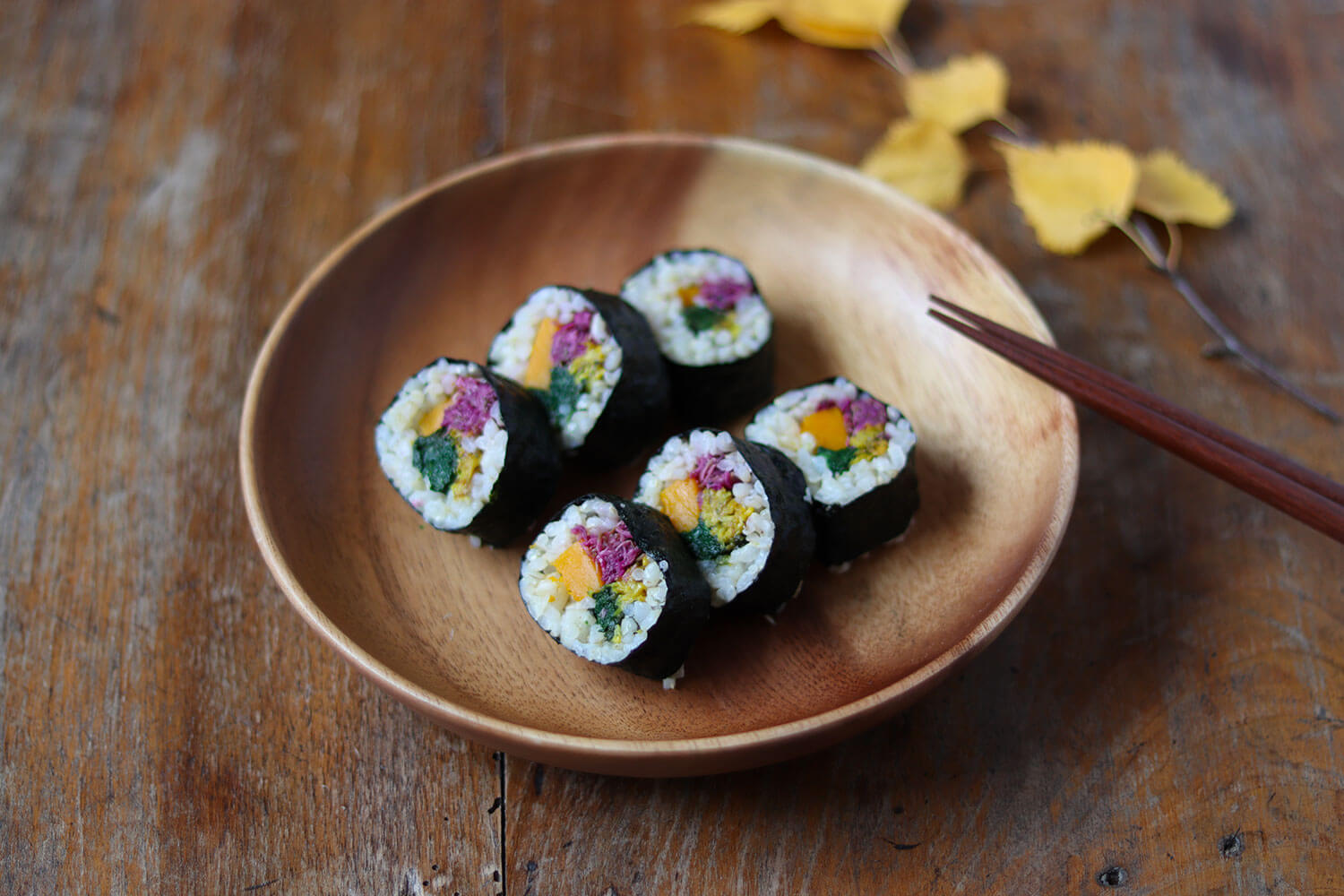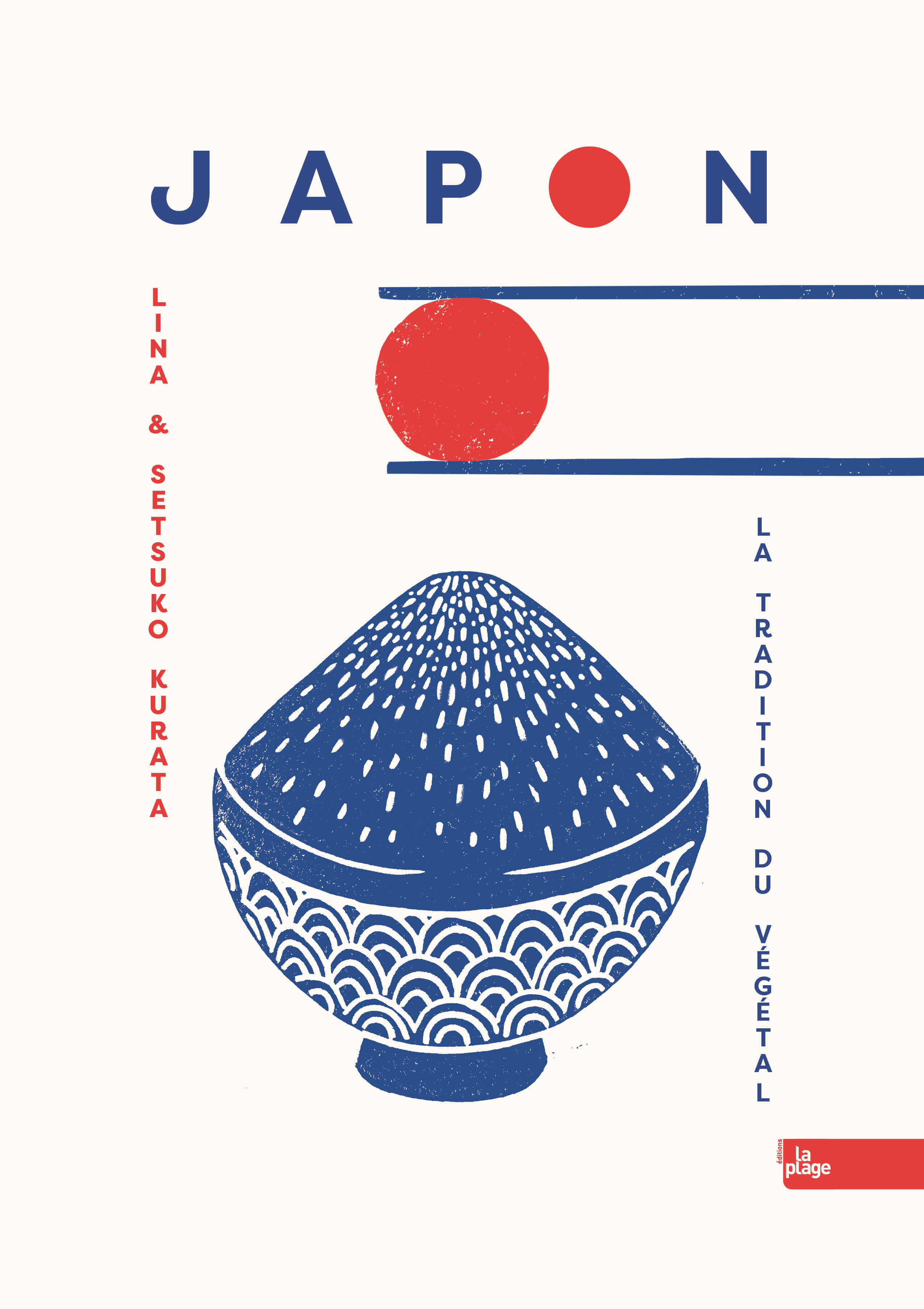Vegan Recipe for Autumnal Pumpkin Maki by Lina and Setsuko Kurata
This recipe for ‘aki no futomaki’ was created according to the precepts of ‘yakuzen’ which state that every meal must comprise five colours.

© Lina Fievet
When putting together their recipe for futomaki, these thick rolls made from rice vinegar and vegetables, Lina and Setsuko Kurata called upon the precepts of yakuzen, a culinary science inherited from Chinese culture and imported into Japan during the Heian era, in the 8th century. From the terms yaku, medication, and zen, the dish, it refers to food that has preventative and curative properties against certain illnesses.
As the authors explain in the book Japon, la tradition du végétal, (‘Japan, the Vegetable Tradition’), yakuzen lies at the origin of traditional Japanese food (particularly in Buddhist monasteries) which is based around a rice dish, a soup and two or three side dishes. Another precept of yakuzen states that each meal must consist of five colours: yellow, green, red, black and white. These colours that make up these futomaki in which the chefs have incorporated edible autumnal flowers, chrysanthemums, or kiku in Japanese.
For two futomaki rolls
Ingredients
40 g pumpkin
40 g fresh shiitake
30 g spinach
180 g cooked short-grain brown rice
1 tbsp rice vinegar
1 pinch salt
1 pinch sugar
2 nori sheets
1 sushi mat
Soy sauce to serve
Method
As soon as the rice and vegetables have been positioned correctly, gently lift the bottom edge of the sushi mat and roll it to bring the bottom edge of the nori sheet towards the upper edge of the rice. The rice and vegetables need to be rolled in the nori sheet. Unroll the bottom part of the mat from the nori sheet.
Use the mat to wrap the rest of the nori sheet around the roll. Do the same for the second roll.
Cut the rolls into 6 pieces. Serve with soy sauce.
Japon, la tradition du végétal (‘Japan, the Vegetable Tradition’) (2021), a recipe book by Setsuko and Lina Kurata published by éditions La Plage (not currently available in English).
Setsuko and Lina Kurata are mother and daughter. They created Japon, la tradition du végétal as a joint work that combines their own recipes with those of Setsuko’s mother (Lina’s grandmother) to produce a digest of three generations of family recipes. Japon, la tradition du végétal is their first book.

© Éditions La Plage
TRENDING
-
The Tattoos that Marked the Criminals of the Edo Period
Traditional tattoos were strong signifiers; murderers had head tattoos, while theft might result in an arm tattoo.

-
Chiharu Shiota, Red Threads of the Soul
Last year, more than 660,000 people visited the retrospective 'Chiharu Shiota: The Soul Trembles' exhibit at the Mori Art Museum.

-
‘Before Doubting Others, Doubt Yourself. Who Can Truly Say a Dish Isn’t What It Used to Be?’
In ‘A Non-Conformist’s Guide to Surviving Society’, author Satoshi Ogawa shares his strategies for navigating everyday life.

-
The Story of Sada Yacco, the Geisha who Bewitched Europe
Described by Dazed magazine as the first beauty influencer, she has been restored to her former glory since 2019.

-
Ito Jakuchu's Naturalist Paintings
From 15 September until 14 October 2018, the Petit Palais showcased the artist's iconic ‘Images of the Colourful Realm of Living Beings’.





